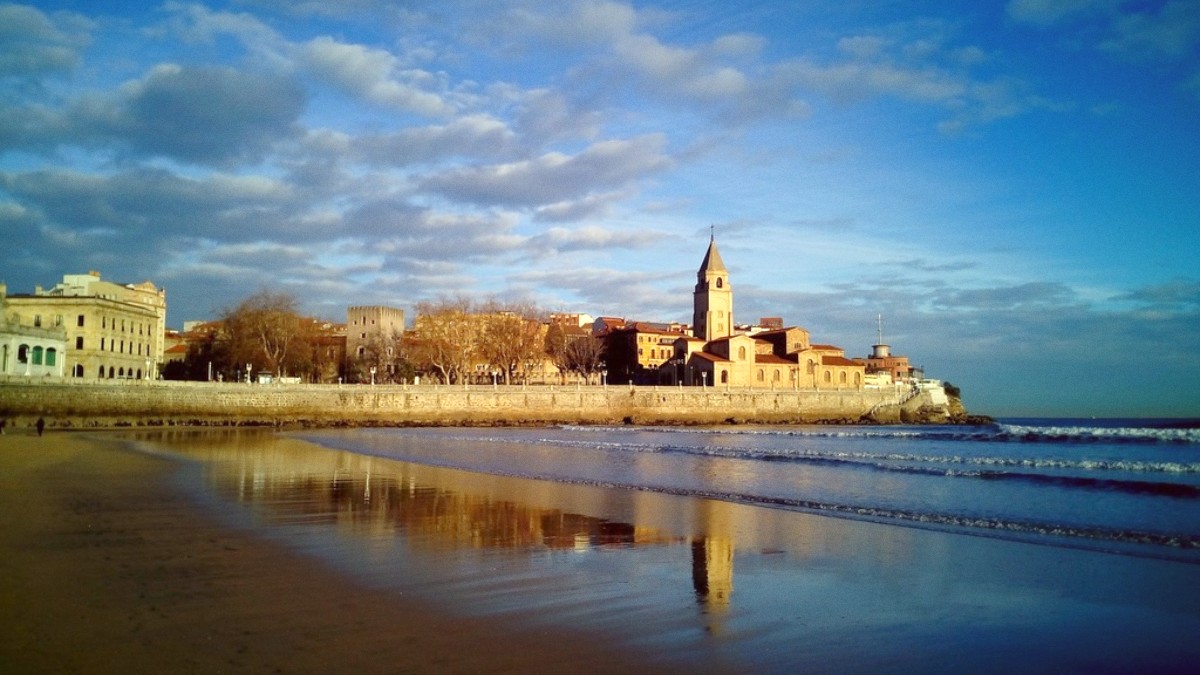
Asturias, Spain
Asturian cuisine grew from strong agricultural and fishing traditions. Centuries of isolation helped preserve its unique culinary identity. Dishes feature local produce, quality meats, and abundant seafood from the Cantabrian Sea.
Cider (Sidra) stands as the quintessential Asturian beverage. Its making and drinking form a deeply ingrained cultural ritual. The unique pouring method (from a height) is specific to Asturias.
The core of Asturian cuisine includes Fabes (large white beans), fresh seafood (like hake, octopus, clams, and crab), robust beef from the Asturiana de los Valles breed, and a wide variety of unique local cheeses (like Cabrales, Gamonedo, and Afuega'l Pitu). Cider apples are also vital. Other common items are potatoes, chestnuts, and Pitu Caleya (free-range chicken).
Asturian dishes often are rich, savory, and frequently slow-cooked, yielding deep, comforting flavors. Garlic, onion, paprika, and saffron are common seasonings. Seafood dishes present fresh, clean flavors, allowing ingredient quality to shine.
While Gijón presents classic Asturian cuisine, specific dishes or ingredients might vary slightly by sub-region. Mountain areas are known for particular cheeses and game. Coastal cities like Gijón excel in seafood due to being a port city, with a strong emphasis on fresh fish and shellfish.
This hearty bean stew stands as a staple of Asturian cuisine. It consists of large white beans (Fabes) slow-cooked with chorizo, Morcilla (Asturian blood sausage), and Lacón (pork shoulder). It presents a rich, comforting flavor.
A true Asturian staple. Find it in traditional Asturian restaurants throughout the city, like Casa Carmen or El Lavaderu.
A generously portioned dish consisting of two large veal fillets (or sometimes other meats) filled with ham and cheese (often Cabrales blue cheese), then breaded and fried until golden.
Usually a substantial serving, often for sharing. Widely available in Sidrerías and Asturian restaurants.
A popular white fish often prepared A la plancha (grilled) or in a simple sauce, highlighting its firm texture and mild flavor.
A common offering in seafood restaurants, especially near the marina.
The iconic Asturian alcoholic beverage. This is naturally fermented apple cider, low in alcohol content (around 5-6%). It is served in an unique way, poured from a height (Escanciado) to aerate it. Best enjoyed in Sidrerías, where the experience is as important as the drink.
Asturias produces a wide variety of local cheeses. Cabrales is a famous, strong blue cheese. Others include Gamonedo, Afuega'l Pitu, and Los Beyos. They are often served with bread or quince paste. Other notable desserts include Frixuelos (thin crepes) and Casadielles (fried pastries).
For a sophisticated culinary experience, Gijón has Michelin-starred restaurants.
Numerous options provide quality Asturian and Spanish cuisine at reasonable prices.
Many small cafes and bars present affordable "menú del día" options, creating a filling and economical lunch.
Gijón has a growing variety of international restaurants, specifically in the city center. You can find Italian, Asian (Japanese, Chinese, Indian), and South American cuisines, satisfying diverse tastes.
Explore diverse dining options beyond traditional Asturian fare.
Mercado del Sur: Gijón's main traditional food market. It presents a great place to experience local life and purchase fresh produce, meats, fish, and local delicacies. Some stalls might sell prepared foods.
Gastronomic markets are smaller; check local listings.
Vegetarian options are increasingly available. Dedicated vegan restaurants are few, but some mainstream restaurants are accommodating. Apps like HappyCow can assist.
Awareness of gluten-free needs is growing. Some restaurants may indicate options. Translation cards are advisable. Spanish law requires allergen listings.
Halal and kosher options are very limited. Best to self-cater from supermarkets with specific certifications or stick to vegetarian/fish options.
Large supermarkets have dedicated sections for organic, gluten-free, and vegan products, good for self-catering.
These are an experience in themselves. They are not just places to drink cider but are social hubs where guests enjoy large portions of traditional food, often shared among groups, and witness the unique cider-pouring ritual (Escanciado).
A true local institution.
Some upscale restaurants present tasting menus specifically designed to pair dishes with different types of Asturian cider, creating a refined approach to the local beverage.
A sophisticated culinary journey.
Certain seafood might be more prevalent in specific seasons. During festivals, guests might discover special local pastries or dishes prepared for the occasion.
Gijón's culinary scene is a blend of tradition and modernity.
Usually held in August, this is a major event celebrating cider. It features mass pours, tastings, and a lively atmosphere.
Throughout the year, Gijón hosts various gastronomic weeks or days dedicated to specific products like fish or mushrooms.
Certain seafood might be more prevalent in specific seasons. During festivals, guests might discover special local pastries or dishes prepared for the occasion.
Carry small cards in Spanish that clearly explain your dietary restrictions (e.g., "Soy celiaco/a, no puedo comer gluten," or "Soy vegano/a, no como carne, pescado, lácteos ni huevos").
Found on sites like Amazon.
Use apps like HappyCow for vegetarian/vegan options. Dedicated allergy apps can also be useful for finding suitable dining establishments.
Download before your trip.
Learn to prepare traditional Asturian dishes like Fabada or Cachopo from local chefs.
Master the unique Escanciado method and discover the art of Asturian cider.
Explore local cider presses (Llagares) and cheesemakers in the surrounding region.
Exploring Gijón's culinary scene goes beyond tasting. Embrace the local traditions for a experience.